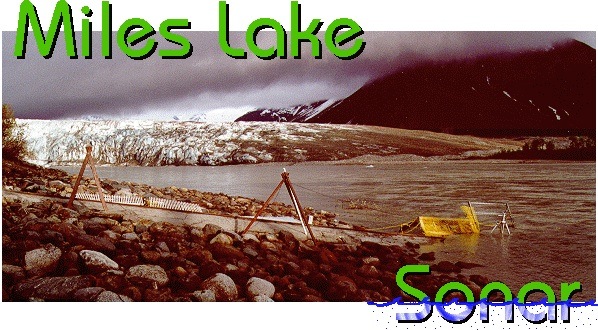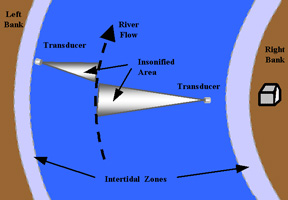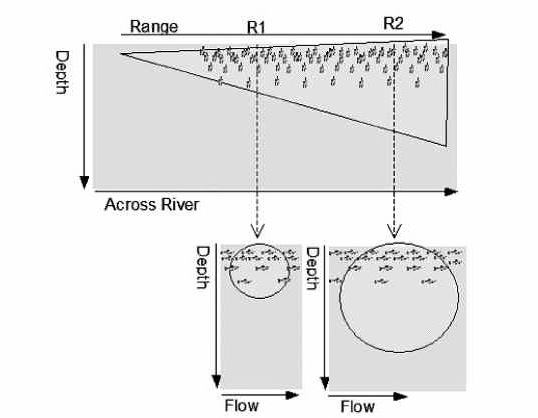
*www.adfg.state.ak.us
At the Miles Lake Sonar Station, fishery
biologists use sonar to estimate the salmon escapement in the Copper
River. The Station is located 50 miles east of Cordova, Alaska on
the Copper River Highway. The type of scanners used at the
facility are two Bendix single-beam side-scan sonar devices. In
order for the sonar to get a "clear view" of the river, it is mounted
to artificial concrete substrate in a south section of the river
bed. This in-river sonar was deployed in 1978, and runs off of
12volt batteries that are continuously recharged by solar energy
panels.


As seen below, the system is aesthetically outdated, but it provides adequate measurement of in-river salmon counts for the Copper River and Prince William Sound Management plan.



The Bendix system is typically only accurate when the ensonification range is no more than 20-30 meters from the transducer. The ping-rate of the sonar in manually adjusted to correspond to fish passing speeds and by comparing oscilloscope fish counts over specified time intervals (Fisheries.org).


As seen below, the system is aesthetically outdated, but it provides adequate measurement of in-river salmon counts for the Copper River and Prince William Sound Management plan.



*(Mueller, 2006)
For this river system, one transducer is set up on either side of the
river in the side-looking mode as seen above. This allows the
transducers to collect data across the whole river. The
echo-integration system relies on the assumption that the echo
integration is uniform across reading portion of the acoustic beam, and
that the echo energy is proportional to the density of the targets
(Mueller, 2006). In otherwords, the strength of the returning
echo to the transducer indicates the amount of salmon passing the
insonification area. This active sonar involves projection of
short sound pulses, or sound energy known as a "ping," in a beam
through water, in which the distance to the target is half of the time
multiplied by the velocity of the beam through the water
(Cornell). The Bendix system is typically only accurate when the ensonification range is no more than 20-30 meters from the transducer. The ping-rate of the sonar in manually adjusted to correspond to fish passing speeds and by comparing oscilloscope fish counts over specified time intervals (Fisheries.org).